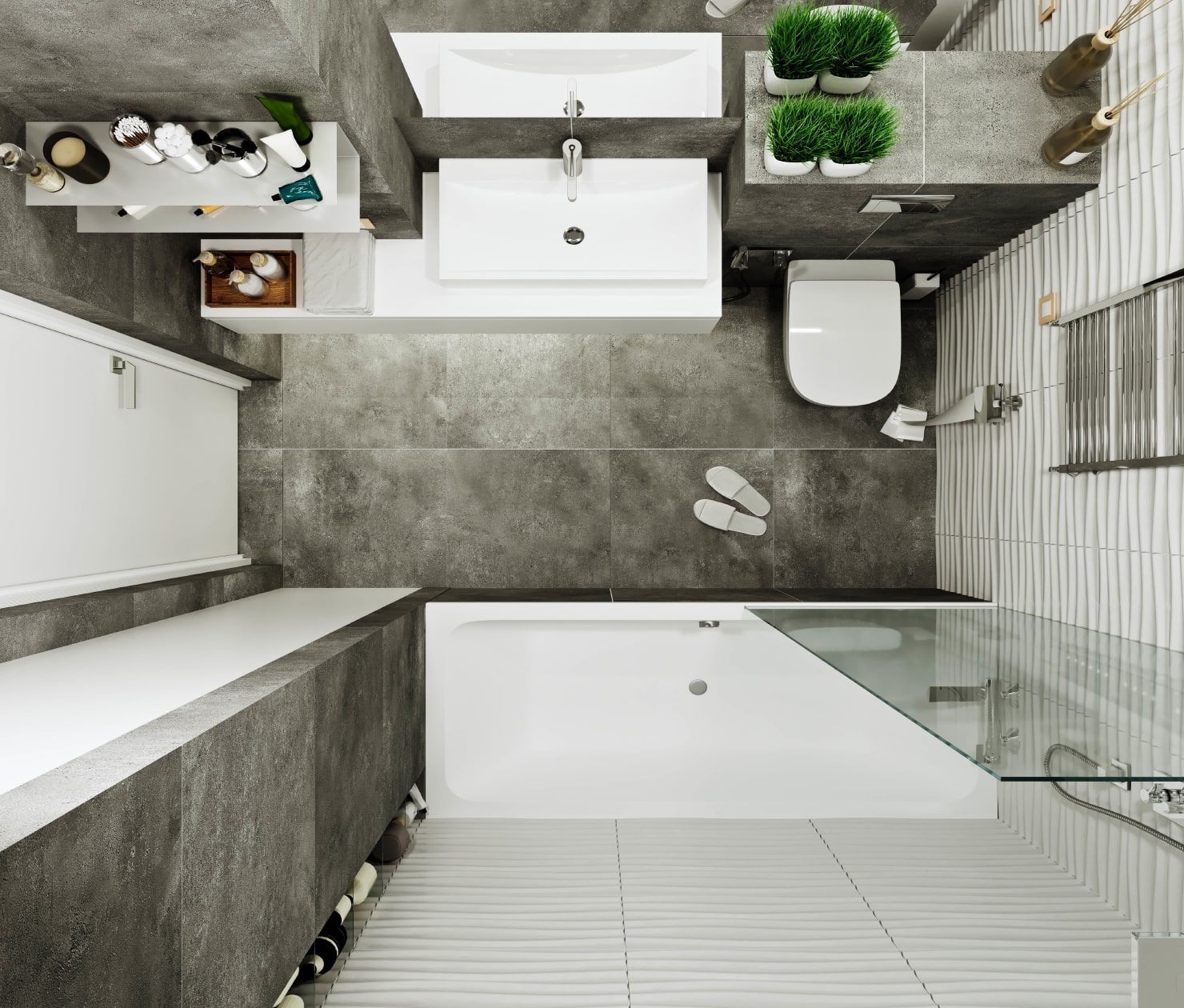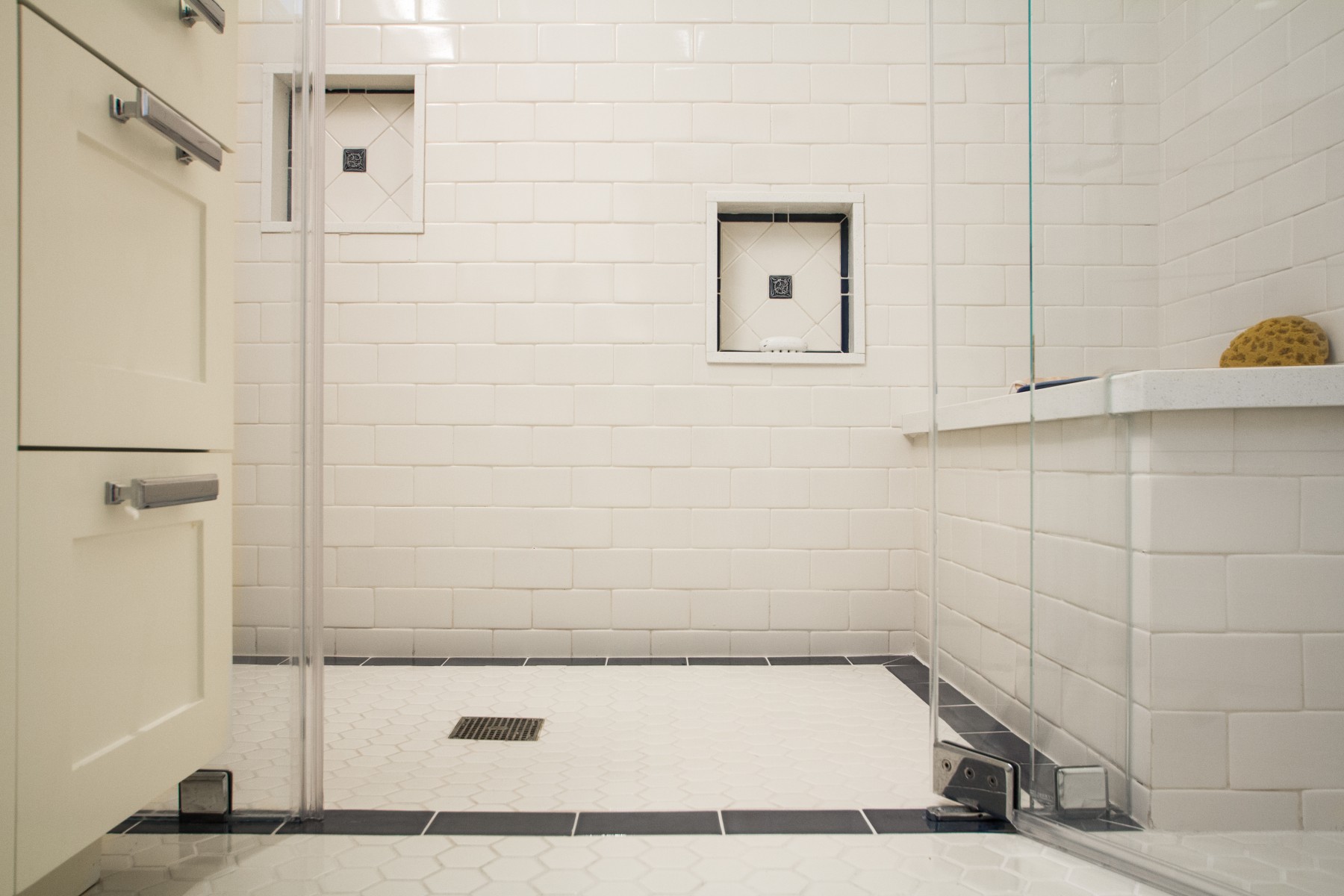Benefits of a Curbless Shower in a Small Bathroom: Curbless Shower Small Bathroom

Transforming a small bathroom into a haven of style and functionality is a challenge many homeowners face. But with clever design choices, even the smallest space can be maximized. One such choice that can dramatically enhance both accessibility and aesthetics is a curbless shower.
Improved Accessibility and Ease of Movement
A curbless shower eliminates the traditional barrier of a shower curb, creating a seamless transition from the bathroom floor to the shower area. This feature is especially beneficial for individuals with mobility limitations, as it allows for easier entry and exit, reducing the risk of tripping or stumbling. For a small bathroom, this design choice can make a significant difference in making the space more accessible and user-friendly.
Enhanced Visual Appeal and Space Maximization
Curbless showers create an illusion of greater space in a small bathroom. By removing the visual barrier of a shower curb, the eye is drawn to the open and continuous floor space, making the bathroom feel more spacious and inviting. This visual effect is amplified when the shower floor is tiled in a similar pattern to the bathroom floor, further blurring the lines between the two areas and creating a sense of openness.
Design Considerations for a Curbless Shower in a Small Bathroom

Creating a curbless shower in a small bathroom can be a challenge, but with smart design choices, you can maximize space and create a luxurious showering experience. Here are some tips to make the most of your small bathroom while incorporating a curbless shower.
Space Optimization
- Maximize Vertical Space: Utilize the vertical space by installing tall cabinets or shelves to store toiletries and towels. This will keep your bathroom clutter-free and create a more spacious feel.
- Mirrors and Lighting: Use strategically placed mirrors to visually expand the space. Consider using a combination of ambient and task lighting to create a brighter and more welcoming atmosphere.
- Compact Shower Fixtures: Opt for compact shower fixtures, such as a handheld showerhead or a rain showerhead with a smaller diameter. This will help conserve space and create a more streamlined look.
Showerhead and Plumbing Fixtures, Curbless shower small bathroom
Choosing the right showerhead and plumbing fixtures is crucial for a comfortable and efficient showering experience. Here are some important considerations:
- Flow Rate: Select a showerhead with a flow rate that is appropriate for the size of your bathroom. A lower flow rate can help conserve water and minimize splashing, especially in a small space.
- Showerhead Type: Consider the type of showerhead that best suits your needs. A handheld showerhead offers flexibility and can be used for rinsing or cleaning. A rain showerhead provides a luxurious and spa-like experience.
- Plumbing Fixtures: Choose plumbing fixtures that are designed for curbless showers. These fixtures typically have a lower profile and are less likely to obstruct the shower area.
Materials and Finishes
The choice of materials and finishes for your curbless shower will significantly impact its durability, aesthetics, and overall cost. Here is a table outlining the pros and cons of different materials:
| Material | Pros | Cons |
|---|---|---|
| Tile | Durable, water-resistant, wide variety of styles and colors | Can be expensive, grout lines require maintenance |
| Stone | Luxurious, natural beauty, durable | Can be very expensive, porous, requires sealing |
| Acrylic | Affordable, easy to clean, available in various colors | Less durable than tile or stone, can be prone to scratches |
| Solid Surface | Non-porous, seamless, easy to clean | More expensive than acrylic, limited color options |
Installation and Maintenance of a Curbless Shower in a Small Bathroom
Installing a curbless shower in a small bathroom requires careful planning and execution to ensure proper functionality and longevity. It’s important to consider the specific challenges of working in a limited space while maintaining accessibility and safety.
Waterproofing and Drainage
Waterproofing is crucial for a curbless shower, especially in a small bathroom where leaks can quickly cause damage. A properly waterproofed shower prevents water from seeping into the subfloor, walls, and surrounding areas.
- A waterproof membrane, typically made of rubber or plastic, is applied to the shower floor and walls to create a barrier against water penetration. This membrane should be installed according to manufacturer instructions and inspected by a qualified professional.
- A proper drainage system is essential to remove water quickly and efficiently. This involves installing a linear drain or a centrally located drain with a slope towards it. The drain should be sized appropriately for the shower area and have a good flow rate to prevent water from pooling.
- Properly sealing all joints and transitions between the shower floor, walls, and drain is critical. This ensures that no water can seep through any gaps or cracks. Silicone sealant or other waterproof materials are typically used for this purpose.
Installation Process
Installing a curbless shower in a small bathroom requires meticulous attention to detail. It’s crucial to follow the manufacturer’s instructions and engage a qualified professional for the installation process.
- Preparing the subfloor is essential for a successful installation. This may involve leveling the floor, adding support beams, or reinforcing the existing structure to ensure the shower floor can support the weight of the shower and its users.
- Installing the shower pan is a crucial step. This involves carefully setting the pan in place, ensuring it is level, and properly connecting it to the drain. The pan should be waterproofed with a membrane and sealed to prevent leaks.
- Installing the shower walls requires careful planning and execution. This involves choosing the right materials, ensuring they are properly installed, and waterproofing them to prevent leaks. Tile, stone, or other waterproof materials are commonly used for shower walls.
- Installing the drain is a critical step in the installation process. The drain should be positioned in the center of the shower floor or along one of the walls. It’s important to ensure the drain is properly connected to the plumbing system and that the slope of the floor directs water towards the drain.
- Installing the showerhead and controls should be done carefully to ensure they are positioned correctly and function properly. This may involve mounting the showerhead on a wall or ceiling, depending on the design of the shower.
Maintenance Tips
Regular maintenance is crucial for ensuring the longevity and functionality of a curbless shower. This involves cleaning the shower regularly and inspecting it for any signs of damage or wear.
- Clean the shower floor and walls regularly with a mild detergent and water. Avoid using harsh chemicals or abrasive cleaners that could damage the shower materials.
- Inspect the drain regularly to ensure it is clear of debris. A clogged drain can cause water to pool on the shower floor, increasing the risk of mold and mildew growth.
- Check the shower walls for any signs of cracks or leaks. If you notice any damage, contact a qualified professional to repair it as soon as possible.
- Check the showerhead and controls regularly to ensure they are functioning properly. If you notice any leaks or malfunctions, contact a qualified professional to repair them.
- Inspect the shower floor for any signs of movement or instability. If you notice any issues, contact a qualified professional to investigate and repair them.
